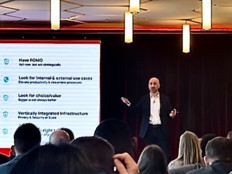IoT Edge
The Internet of Things edge refers to the part of an IoT architecture that is closest to the end devices or sensors that collect data. In simple terms, it is the point where devices and data meet. This layer of IoT architecture allows devices to communicate and share data in real time without relying on a centralized system. IoT edge devices include sensors, gateways, routers and industrial controllers.
By collecting and analyzing data at the edge, IoT edge systems can have a major impact on businesses. Using edge data, businesses can make real-time decisions, increase efficiency and reduce costs. For example, in manufacturing, IoT edge devices can monitor machines and identify maintenance issues before they result in breakdowns, preventing downtime and reducing repair costs. In healthcare, IoT edge devices can monitor patients' vital signs, alerting doctors to potential issues and allowing for faster and more accurate diagnoses. IoT edge technology has also enabled new business initiatives, such as pay-per-use models in industries like transportation and agriculture.
IoT edge is linked to other technologies such as edge computing, fog computing and edge analytics. Edge computing refers to the practice of processing and analyzing data on edge devices, rather than transmitting data back to a centralized system for analysis. With fog computing, data is processed and analyzed at the network edge, rather than the device edge. Edge analytics refers to data analysis conducted at the edge to speed insights and real-time decision-making.
IoT edge technology is used extensively in technology that supports a variety of applications, from smart homes and cities to industrial automation and healthcare. Companies such as Amazon, Microsoft, and IBM offer edge computing services and tools to help businesses deploy and manage IoT edge devices. With the continued growth of the Internet of Things, the importance of IoT edge technology is expected to increase in the coming years as businesses look to harness the power of real-time data to gain a competitive advantage.
How Does IoT Edge Play a Part in Digital Transformation?
Examples of IoT Edge Devices
A wide range of devices can be used to support IoT edge computing.
- IoT gateways enable communication between devices and the cloud. These gateways also perform data filtering and analytics, making them an essential component of many IoT systems.
- Sensors collect data from the surrounding environment and transmit it to the processing unit and are intrinsic elements of smart city, agricultural and manufacturing technologies. For example, in a manufacturing setting, sensors can detect when a machine is about to malfunction and alert operators before a breakdown occurs.
- Self-driving cars are another type of IoT edge device. These vehicles generate, process and use data without sending it to the cloud, at least for some functions. Self-driving cars rely on sensors, cameras and other devices to navigate and make decisions and are a prime example of IoT edge computing in action.
- IoT servers process data at the edge, reducing latency and enabling real-time data analysis. They are particularly useful in settings where fast data processing is essential, such as in the oil and gas industry or for emergency response.
Edge Computing vs. Cloud Computing
When deciding between edge computing and the cloud, businesses should consider their specific needs and use cases. For example, businesses that require real-time processing and decision-making, low-latency and high-speed connectivity may benefit from edge computing. This includes industries such as manufacturing, transportation and healthcare, where rapid response time and decisiveness can be critical. On the other hand, businesses that require massive data storage and analysis, global accessibility and scalable infrastructure — in industries such as e-commerce, media and finance — may benefit more from cloud computing. In some cases, businesses may opt for a hybrid approach, utilizing both edge computing and cloud computing to achieve the best of both worlds.







